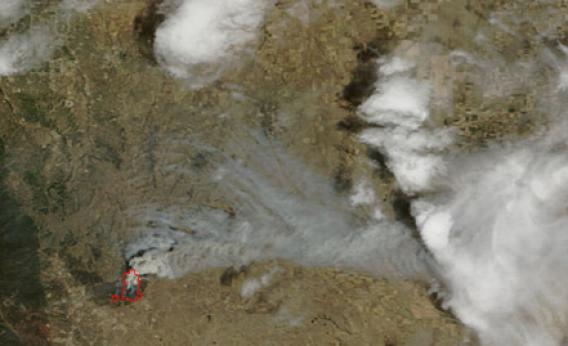Create a free profile to get unlimited access to exclusive videos, sweepstakes, and more!
Colorado Is on Fire. Again.

Sometime in the early afternoon on Tuesday, a fire started northeast of Colorado Springs, Colo., in Black Forest. It grew rapidly, and as I write this, it has consumed well over 15,000 acres of forestâthatâs more than 60 square kilometers or 20 square miles. Two people are confirmed dead, and the fire has destroyed 360 homes, making it the most destructive in Colorado history. (Last yearâs devastating Waldo Canyon fire destroyed 347 homes.) About 38,000 people, an immense number, have been evacuated from 13,000 homes.
And the worst part is the phrase you never want to hear: There is 0 percent containment. The fire is raging out of control, with high temperatures, no rain, and strong winds expected for the next few days. Parts of Colorado Springs are under mandatory evacuation orders, and itâs not at all clear how big this fire will grow. Not far away, a second fire at Royal Gorge is burning as well. As I write this, itâs at about 4,000 acres burned.
The image above, taken by NASAâs Terra satellite, shows the gray smoke from Black Forest fire blowing east. The red outline shows actively burning areas as determined by a thermal infrared detector on Terra. This was taken on Wednesday, and the fire is much larger now.
Last summer, conditions in my home state of Colorado were awful: hot, dry, and windy, after a winter with very low amounts of snow. We got more snow earlier this spring but very little since, and weâve already had record heat. Fires are inevitable under these conditions.
I canât see this wildfire (or the other two currently burning in Colorado) from my home, but I remember well seeing the plume from the Boulder wildfire last year going over my house (and the terrifying smoke from a fire north of me as well). I wasnât in any danger, but a lot of folks closer to town certainly were. It looks like weâre on this trajectory again.
You may guess what Iâm thinking about this: global warming. These conditions are precisely what is expected from a warming planet; changing and more extreme weather patterns bringing droughts to some areas and torrential rain and flooding to others. Yes, even more snow in some places in the winter, because even though weâre warming up, the temperatures in winter still get below freezing, just not as much below freezing. That means more water in the air and more precipitation.
But not everywhere. In Colorado weâre very dry. Worse, I can look out my window and see smallish dark clouds blowing by. Those can commonly produce lightning without rain, so we get increased fire risk without the benefit of the rain. Itâs a double whammy.
I donât like this at all, but I fear very much this is the new normal. As temperatures creep up, weâll see more fires in this country; a Department of Agriculture report estimates that they will double by 2050, approaching 20 million acres lost every year. Thatâs an area nearly 300 kilometers (180 miles) on a side. Itâs incomprehensible.
But by then, perhaps, it will be all too obvious. Thatâs what ânew normalâ means. Not happier plants or easier ship passage through Arctic waters. Instead, get used to reports of more Arctic ice melting, more fires, more flooding, and just more plain old bad news.
If you want to keep up with the latest news on the fires, the Denver Post has a live blog covering it.


























